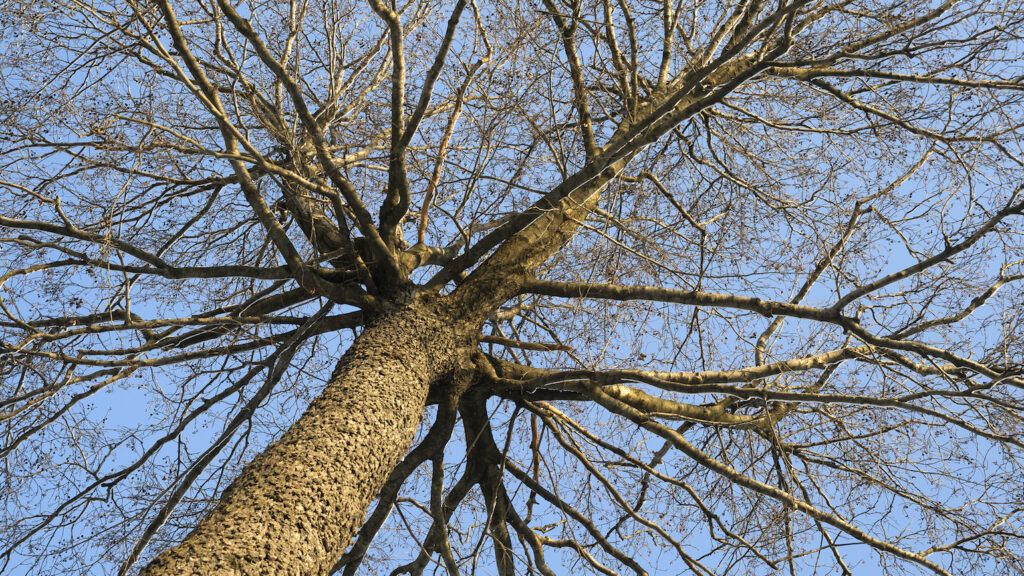My neighbors across the street boast one of the most striking trees in the neighborhood—a towering oak that likely predates our 75-year-old development by a lot. Every year, it drops its leaves after a lovely fall foliage show.
This year, after a wet, warm summer, foliage was a bit different in my Massachusetts town. And through some combination of events, that glorious oak seemed to have dropped all of its uncountable leaves on a single crisp, blustery day. I arrived at home that afternoon to find our front walkway, driveway and sidewalk completely blanketed.
My son and I had a great time making an epic leaf pile for jumping—no rain made for easy, pillowy fun. Then, together with my husband, we raked the leaves into piles, shredding some for compost, bagging the rest.
The whole time, I marveled at the speed of this year’s leaf drop. Even as I was aware that it was an accident of breeze patterns that left all the leaves in our yard, I kept looking up and feeling a zing of awe at the suddenly bare network of limbs, branches and twigs that watched quietly over our neighborhood, starting its restful season before setting spring leaf buds.
And I felt thankful for those fallen leaves as I was reminded of my favorite quote from the author and naturalist Hal Borland. He wrote it referencing October, but this year’s later drop has me substituting the month: “[November] is the fallen leaf, but it is also a wider horizon more clearly seen. It is the distant hills once more in sight, and the enduring constellations above them once again.”
When I lay in that pile of dry, crisp leaves and looked up into the oak tree across the street, I felt a clarity and peace that comes along with the inconveniently early sunsets and chilly temperatures of the transition from fall into winter. I could still admire the tree as I had in spring and summer, but I could also see through it, beyond it, to the big sky that blankets us all.
Have you ever noticed the beauty of a newly-bare tree?





